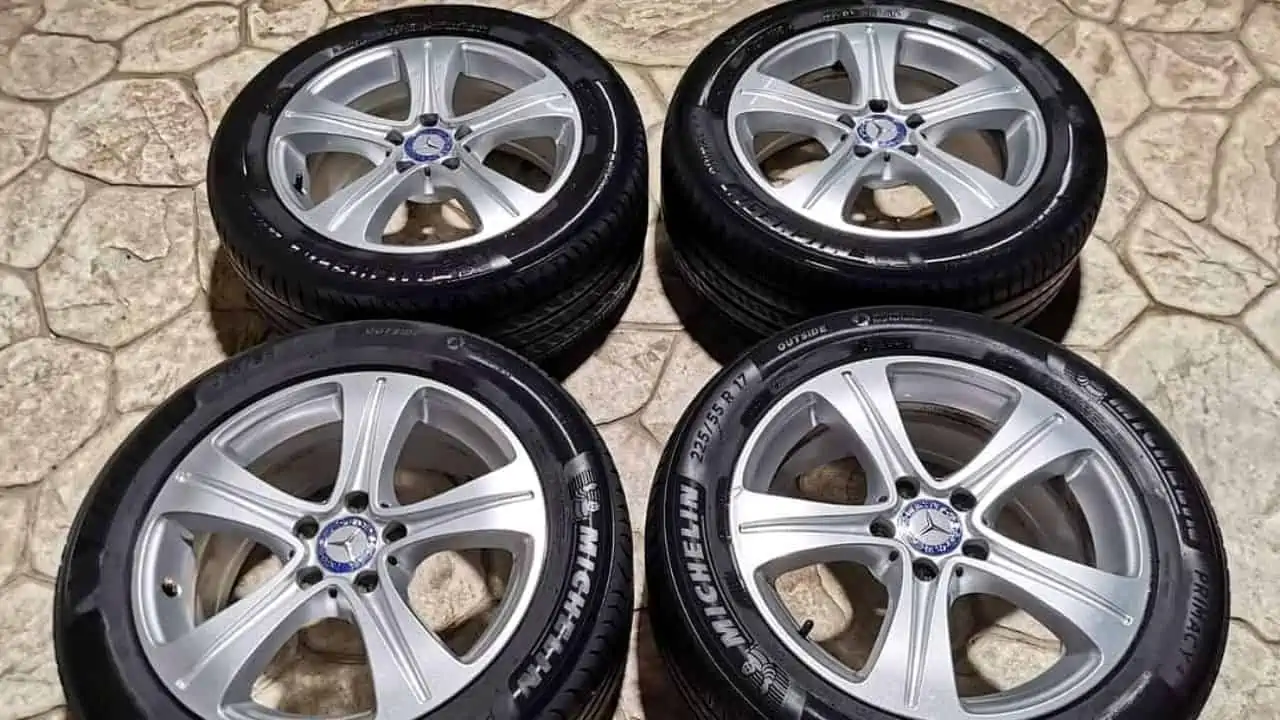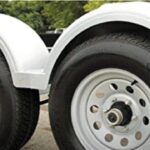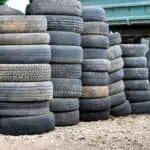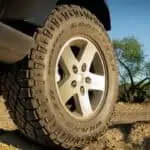When it comes to choosing the right size wheels for your car, it is important to know the difference between 18 and 20 inch wheels. 18 inch wheels are typically used on smaller cars, while 20 inch wheels are used on larger cars. There are a few exceptions to this rule, but for the most part, this is how it works.
Here’s a closer look at the differences between these two sizes of wheels: 18 inch wheels are typically cheaper than 20 inch wheels. This is because they are not as popular and there is not as much demand for them.
They are also easier to find in stores since they are not as popular. 20 inch wheels provide a smoother ride than 18 inch wheels. This is because they have a larger circumference which makes them better able to absorb bumps in the road. They also grip the road better which gives you more control over your car.
You May Like
- ITEM SPECIFICATION:size:18*8.0in,ET:40,H/PCD:5*114.3,CB:73.1
- NOTICE: please refer to product specifications below for exact product fitment.
- INSTALLATION: Engineered to factory specifications, this wheel is easy to install, and we…
- SCITOO WHEEL RIM: head turning style, light weight, durable finish in black, graphite, milled,…
- Compatible with Ford 8Lug Trucks SUVs: 2000-2005 Excursion, 1999+ F250 F-250, 1999+ F350 F-350….
- SPECIFICATIONS: 8×170 Bolt Pattern. 18×9 Wheel Size. -12mm Offset (4.5″ Backspacing). 125.2mm…
- Our wheels require cone seat (also known as acorn/taper/conical) lug nuts for proper…
- [NO SPACERS REQUIRED] These 18×9 rims provide aggressive wheel offset, giving up to 2 inches…
- Graphite
- Lifetime structural and a one-year finish warranty against peeling or lifting of finish
- Price is per wheel
- Lug nuts are not included with wheel purchase
There are a few key differences between 18 and 20 inch wheels. The most obvious difference is the size; 20 inch wheels are two inches larger than 18 inch wheels. This can have an impact on the look of your vehicle, as well as the performance.
20 inch wheels typically weigh more than 18 inch wheels, which can affect the handling of your vehicle. They also tend to be more expensive than their smaller counterparts.
If you’re considering upgrading to 20 inch wheels, be sure to do your research to make sure they’re a good fit for your car and driving style.
You’ll also want to make sure you have the budget for them since they can be pricier than other options.
The differences between 17, 18 and 19 inch tyres tested and explained
What is the Difference between 18 And 20 Inch Wheels
There are a few key differences between 18 and 20 inch wheels. Firstly, 20 inch wheels generally provide a smoother ride than 18 inch wheels. This is because they have a smaller circumference, which means that they rotate more slowly.
This results in less impact on the road and a more comfortable ride for the driver and passengers. Secondly, 20 inch wheels tend to be more expensive than 18 inch wheels. This is because they are larger and require more material to manufacture.
Finally, 20 inch wheels may not be compatible with all car models. Some cars may have suspension or brake components that are designed for 18 inch wheels and cannot accommodate larger sizes.
You May Also Like
- Compatible with 2003-2024 Silverado 1500, Color/Finish: Black/Painted, OEM Tire Size: 235/55R20
- FULLY COMPATIBLE WITH OEM EQUIPMENT – All of our rims come compatible with all factory…
- EASY INSTALLATION – Engineered to factory specifications, this wheel is easy to install, and we…
- FITS ALL RIM REPLACEMENT NEEDS – Road Ready OEM replacement wheels are perfect for single wheel…
- DIRECT FIT REPLACEMENT WHEEL – All Factory Specs: Size – 20×8.5″, Bolt Pattern – 5x120mm,…
- VEHICLE SPECIFIC – Fits Impala LTZ or Premier, 2014-2020 Models. Not a Generic Aftermarket…
- QUALITY GUARANTEED – 30 Day Free Returns. Guaranteed to Balance. 2 Year Limited Finish…
- WHAT’S INCLUDED – Price is for One Wheel Only. Center cap, lugs, and tire pressure sensor are…
- Wheel Details – Size: 20″x10″ ; Offset: 50mm; Center-Bore: 71.5mm; Color-Finish: Gloss Black
- Fits Gloss Black Factory Reproductions For Jeep Trackhawk Replica Wheels . One Piece Aluminum.
- Stylish and Durable Design – One-piece cast aluminum construction engineered for a clean,…
- Custom-fit for selected GM trucks and SUVs; designed to work with original equipment (OE)…
- RST STYLE, BLACK GLOSS FINISH: 20×9 CV32 wheels feature a factory-inspired RST split-spoke…
- FITS SILVERADO 1500 AND GM FULL-SIZE SUVS: 6×139.7 bolt pattern with +28 offset provides direct…
- ONE-PIECE CAST ALUMINUM CONSTRUCTION: Made from lightweight, rust-resistant A356 aluminum alloy…
- ENGINEERED BY OE WHEELS: OE Wheels products are engineered for strength, balance, and precise…
Do Larger Wheels Provide a Smoother Ride
The debate over wheel size is one that has been around for a while, with no clear consensus. Some people swear by larger wheels, saying that they provide a smoother ride. Others find that smaller wheels are just as good, if not better.
So what’s the truth?
They can also help you maintain your speed on rough terrain. But they come at a cost: bigger wheels are heavier and more expensive than smaller ones. Second, it’s important to think about the width of your tires.
Wider tires provide more contact with the ground, which can make for a smoother ride. But they can also make it harder to maneuver your bike and may cause you to slip in wet conditions. So what’s the best wheel size for you?
It really depends on your individual needs and preferences. If you’re looking for an easy ride, go for larger wheels. If you want more control over your bike, or if you’re riding in wet conditions, stick with smaller ones.
How Do Different Sized Wheels Affect Gas Mileage
It’s a common misconception that bigger wheels equals worse gas mileage. In reality, it depends on a variety of factors such as wheel weight, rolling resistance and aerodynamics.
Wheel weight: Heavier wheels will require more energy to get moving and keep moving, which can lead to slightly lower gas mileage.
However, the difference is usually negligible unless the wheels are significantly larger or heavier than stock.
Rolling resistance: This is the force required to keep a tire rolling forward and is affected by the tire’s construction, tread pattern and inflation pressure. A tire with higher rolling resistance will require more energy to maintain speed, resulting in poorer gas mileage.
Again, the difference is usually small unless the tires are very different from stock.
Aerodynamics: Larger wheels can actually improve aerodynamics by reducing turbulence around the tires at high speeds. This can lead to better gas mileage on the highway but may have little effect in stop-and-go city driving.
Is It Better to Have More Than One Size of Tire in Case of a Flat
If you’ve ever had a flat tire, you know how frustrating it can be. You’re stranded on the side of the road, and all you can think about is getting back on the road. But what if you don’t have a spare tire?
Should you buy a new one?
There are a few things to consider when deciding whether or not to buy a new tire. First, what kind of tire do you need?
If you have a puncture in your sidewall, you’ll need a different type of tire than if you have a hole in your tread. Second, how much money are you willing to spend? A new tire can be expensive, so it’s important to weigh your options carefully.
Finally, how often do you plan on using your spare tire? If you only use it occasionally, it might not be worth the investment.
If you decide that buying a new tire is the best option for you, there are a few things to keep in mind.
Make sure to get the same size and type of tire that’s on your car currently. And if possible, try to find a matching brand and model so that your tires wear evenly. Once you have your new spare tire, remember to check its pressure regularly and keep it inflated properly.
This way, if (and when) you do get another flat,you’ll be prepared!
How Much Does an Extra Two Inches of Wheel Diameter Change the Look of a Car
An extra two inches of wheel diameter definitely changes the look of a car. The car will sit higher off the ground and the wheels will be more noticeable. The increased size may also make the car look more aggressive or sporty.
If you’re considering changing the wheel diameter on your car, it’s important to consult with a professional to ensure that the new wheels will fit properly and won’t adversely affect your car’s performance.
Conclusion
There are a few key differences between 18 and 20 inch wheels. For starters, 20 inch wheels typically weigh more than 18 inch wheels. This is due to the larger size and additional metal required to make them.
Additionally, 20 inch wheels generally provide a smoother ride than their smaller counterparts. This is because they have more surface area in contact with the road. Finally, 20 inch wheels typically cost more than 18 inch wheels.
This is because they are more difficult to manufacture and require specialized equipment to produce them.


















